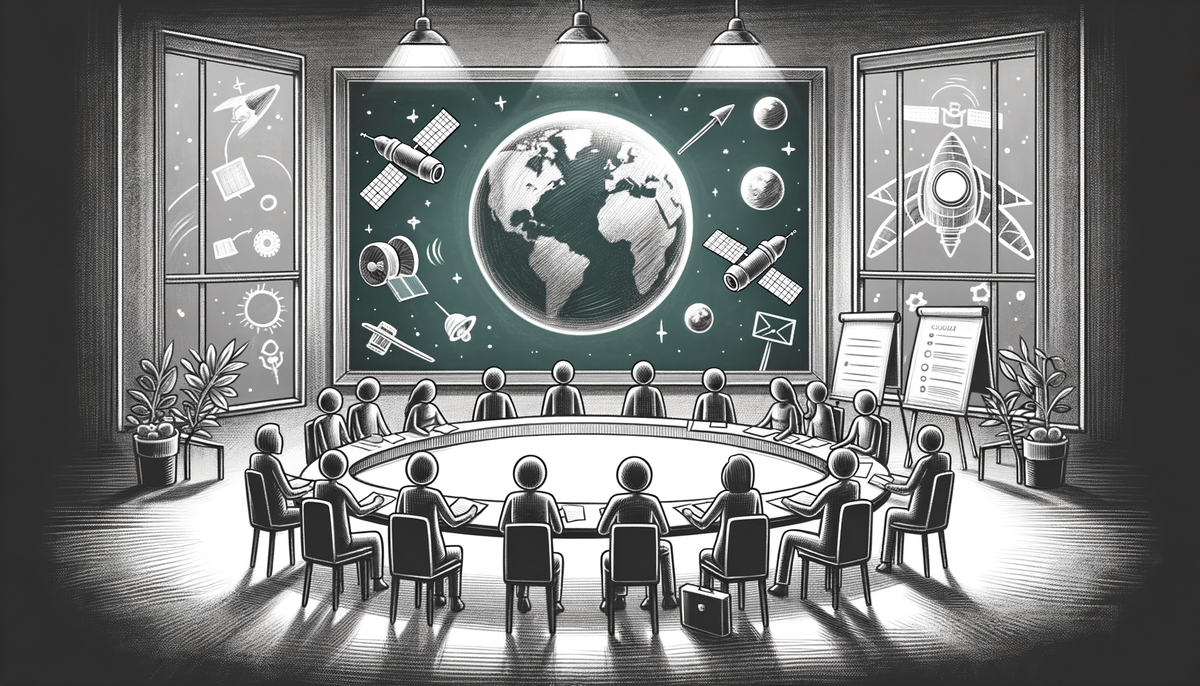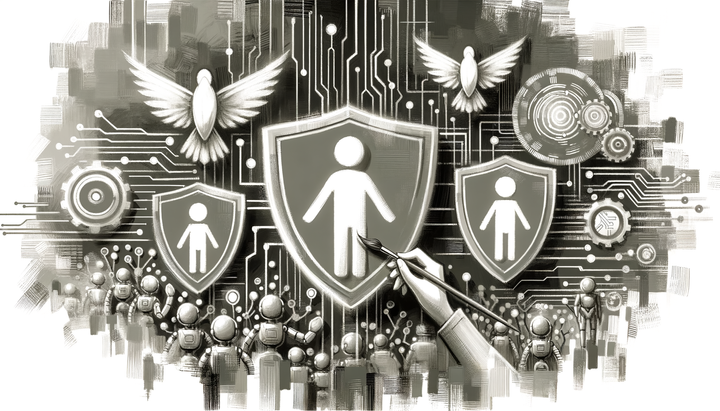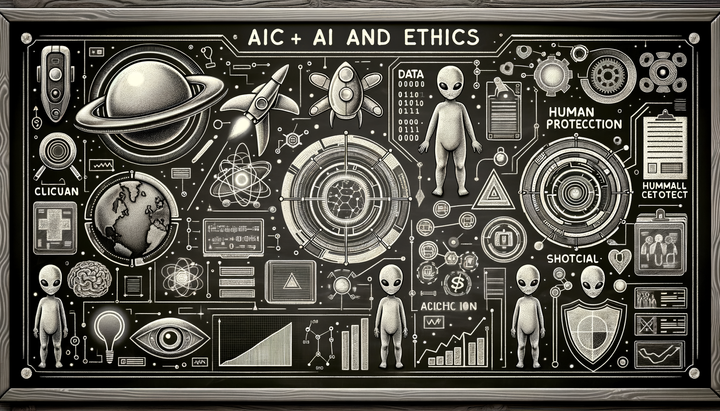AI Updates: Revolutionizing Industries and Transforming Markets

This article provides an in-depth exploration into the multifaceted world of artificial intelligence, examining China's rapid production of AI models, Amazon’s innovative AI shopping tool, Nintendo’s creative integration of AI in its music streaming service, the emerging paradigm of rating AI agents’ performance, the transformation of brand video production through AI, HPE’s unified data layer for accelerating AI applications, and how Ministry Brands is leveraging AI to boost coding efficiency and donations. It brings together insights and analyses from diverse sectors, offering perspectives on innovation, collaboration, and ethical responsibilities in the context of ongoing AI revolutions.
China’s Ambitious Flood of AI Models: Rethinking Global Innovation Strategies
China’s recent surge in AI model production represents a strategic, multifaceted push to consolidate technological supremacy—a move that has captivated experts and triggered heated debates in global tech circles. While many Western companies have historically prioritized creating a singularly high-quality model before scaling up, China is embracing a different approach: rapid prototyping and mass deployment. This philosophy not only accelerates the learning curve but also ensures that AI innovations permeate diverse industries such as manufacturing, healthcare, and finance with remarkable speed.
Research shows that the Chinese model aims to flood the market with a range of AI applications that are quickly iterated upon, enabling early adopters and industry stakeholders to seize on potential opportunities before competitors catch up. The state-supported technology giants are pooling talents and resources, creating an atmosphere of vigorous experimentation and adaptive learning. This strategy has resulted in an ecosystem where experimentation, speed, and volume are as crucial as refinement, a combination that has made some international observers rethink traditional innovation strategies.
“If our era is the next Industrial Revolution, as many claim, AI is surely one of its driving forces.” – Fei-Fei Li, The Quest for Artificial Intelligence
This rapid adoption also carries inherent responsibilities. With a rush to deploy comes the risk of overlooking crucial elements such as data privacy and ethical guidelines. As Chinese enterprises continue to embed their technologies into global supply chains, the stakes rise dramatically. The long-term viability of such not only relies on economic success but also on establishing transparent ethical practices that can ensure both sustainable growth and consumer trust.
Global markets are watching with bated breath as this strategy redefines the balance between speed and precision in AI development. For more discussions on transformative impacts across industries, consider exploring related insights on ethical AI practices.
Enhancing Consumer Experiences: Amazon’s “Interests” AI Shopping Tool
Innovation sometimes meets convenience in the most delightful ways. Amazon’s introduction of the beta AI shopping tool “Interests” is a perfect example of how artificial intelligence is beginning to reshape everyday retail experiences. The tool uses state-of-the-art large language models to interpret natural language queries—turning simple, everyday phrases into highly personalized product recommendations. Imagine casually mentioning “the latest pickleball gear” while scrolling on your phone, only to be presented with curated product selections that perfectly match your interest!
This breakthrough not only simplifies the consumer's journey amid the overwhelming volume of online products but also leverages vast amounts of data to enhance relevance. The underlying mechanism scans through Amazon’s extensive inventory, pinpointing new products, restocks, and deals that align closely with user preferences. Such a dynamic and reactive system epitomizes a shift towards personalized digital retail experiences.
Industry experts note that this evolution in customer experience is critical for maintaining engagement in an increasingly competitive e-commerce landscape. Amazon’s innovative approach is a harbinger of a holistic trend that sees retailers integrating AI-driven personalization to foster a seamless and enjoyable shopping environment. Comparatively, while traditional shopping experiences emphasized manual filtering and static recommendations, platforms like Amazon are paving the way for agile, data-informed engagements that anticipate consumer needs.
Adding personal perspective, I find it particularly impressive how such innovations not only streamline shopping but also contribute to a richer customer narrative. Firms like Amazon are setting new industry benchmarks, and similar strategies can be observed in other sectors detailed on our AI.Biz updates covering transformative industry shifts, illustrating the pervasive influence of AI across all aspects of our daily lives.
AI Meets Entertainment: Revolutionizing Experiences with Nintendo Music
Entertainment has always been a realm where technology and creativity intermingle, and Nintendo’s latest venture into music streaming further illustrates this blend. The recent expansion of its music library with iconic soundtracks from titles like Kirby, Tetris, and Dr. Mario is more than a nostalgic tribute—it’s a demonstration of how AI can nurture diverse cultural experiences in the digital era.
Through its Nintendo Music app, available on both Android and iOS, subscribers to Nintendo Switch Online now have access to a treasure trove of memorable soundtracks that evoke powerful memories and emotions. This move highlights a broader trend within the entertainment industry: the convergence of AI with traditional media to foster interactive and engaging user experiences. Even though the service currently delivers only a part of Kirby’s iconic compositions, it hints at a future where expansive playlists and user-driven content management could redefine audience interactions.
Historically, the music industry has dynamically evolved—from vinyl and radio to streaming services that harness machine learning algorithms to recommend songs based on past listening habits. Nintendo’s strategy mirrors these trends, with added benefits for the gaming community where music is more than background noise; it is an essential narrative element. As more companies blend interactive media with AI, we may see a future where entertainment is not just consumed but also co-created, echoing sentiments from past innovators in the digital space.
Like many exciting innovations detailed across our platform updates, this movement invites both nostalgia and anticipation. It serves as a reminder that technology, when interwoven with cultural elements, can open new avenues of engagement that transcend conventional boundaries.
Rethinking Workforce Dynamics: Rating AI Agents on Performance
The digital transformation sweeping across industries has reached a novel threshold where the integration of artificial intelligence into the workforce is prompting radical innovations—not only in how work is executed but in how digital actors are evaluated. Lattice CEO Sarah Franklin’s proposition to rate AI agents on performance, analogous to the systems used for human employees, is a bold step that challenges conventional paradigms.
This idea is resonating across sectors as companies integrate increasingly autonomous AI agents that are capable of performing complex functions. The suggestion is that, just as human workers are beset with targets and performance indicators, AI tools should similarly be held accountable. This accountability could ensure that as automation increases, a clear set of expectations govern the interactions between human and machine colleagues. Such a system might eventually guarantee transparency and continuous improvement, helping extract optimal performance from digital tools deployed within various organizational frameworks.
“We need to develop an ethical framework for artificial intelligence, one that ensures its benefits are shared equitably and responsibly.” – Timnit Gebru, Co-founder of Black in AI
Critics have voiced concerns about equating AI performance to human job metrics, particularly in the context of potential job displacement. However, the evolving view is that rigorous evaluation frameworks can spur collaboration between human oversight and AI efficiency, thereby transforming AI tools into genuine partners. In industries where the margin for error is slim—be it financial services, healthcare, or manufacturing—such an approach could be pivotal in bridging the gap between automated assistance and nuanced human judgment.
This concept reminds us of historical shifts in workforce dynamics, where technological revolutions demanded new forms of accountability and skill development. As we monitor how AI becomes an integral part of our daily work environments, these discussions on performance ratings will remain central to fostering trust and ensuring responsible integration of emerging technologies. Further discussions on industry transformation can be found on our AI.Biz platform.
Transforming Brand Video Production: AI as the Modern Director
In the realm of content creation, artificial intelligence is emerging not merely as a tool for efficiency but as a creative partner—reshaping the way brands communicate and engage with audiences. A recent report by Wistia highlights a dramatic evolution in brand video production, with a significant uptrend in the adoption of AI tools by marketing professionals. With many firms increasing their video output and pivoting towards in-house productions, AI is playing a decisive role in managing both the creative and operational challenges of video marketing.
AI, by automating tasks that once required meticulous manual effort, frees up creative teams to focus on ideation and storytelling. As a result, even with a noticeable dip in engagement rates—a trend noted by Wistia—brands are exploring how AI can deliver quicker turnarounds and cost efficiencies without sacrificing narrative value. The dichotomy between the so-called “uncanny valley” of AI-generated content and the natural human touch poses an ongoing debate. However, many companies are finding a sweet spot where AI-generated teasers or short-form content complement the more labor-intensive cinematic productions crafted by seasoned creatives.
Marketing experts suggest that these dual approaches will coexist, allowing brands to experiment with various formats while ensuring that the final, most critical communications resonate with authenticity. As digital channels become increasingly saturated, this dual reliance on technology and creativity emphasizes the necessity for both innovation and a human-centric design approach. For those looking for more insights on how AI is transforming industries and even reshaping workspaces, our comprehensive updates offer a deeper dive.
In addition, this trend reinforces the broader narrative that AI can co-author both operational efficiency and emotional resonance—a combination that is critical for brands that aim to thrive in a competitive digital ecosystem.
Data Unification and the Financial Frontier: HPE’s Unified Data Layer
Hewlett Packard Enterprise (HPE) is leading the charge in the intersection of data and intelligence with its newly introduced Unified Data Layer. In today’s era where data is both abundant and diverse, the integration of structured and unstructured information into a coherent “AI-ready” format is crucial. HPE’s solution not only accelerates the performance of AI applications but also enhances decision-making processes across industries such as financial services, where precision and speed are of utmost importance.
This initiative reflects a broader industry trend where bridging the gap between raw data and actionable insights is considered the next frontier in technological advancement. By providing a seamless flow of data, HPE enables businesses to harness the power of AI to customize services, optimize operations, and even predict future trends. In financial services, where predictions about market movements or personalized investment strategies are vital, this unified approach could revolutionize the way institutions serve their customers.
Moreover, HPE’s venture into integrating blockchain and quantum computing signals a forward-thinking attitude towards the evolution of secure and efficient data systems. With projections that the generative AI market in finance could soar to $18.9 billion by 2030, the implications are profound. Experts predict that the success of such systems hinges on the symbiotic relationship between cutting-edge hardware and smart software; the former ensures robust processing capabilities while the latter translates data into meaningful narratives for business growth.
This development has stirred considerable interest among financial analysts and tech strategists who believe that such innovative steps foster greater self-service interactions and heighten regulatory compliance. The continuous evolution in this space not only reinforces the importance of data unification but also underpins a larger narrative on the integration of AI into the very fabric of modern industries. For additional perspectives on how technology disrupts traditional business models, you might wish to explore our related content on transformative impacts in marketing and supply chains.
Boosting Social Impact: AI’s Role in Nonprofit Innovation at Ministry Brands
The world of nonprofits is witnessing its own digital renaissance as innovative companies like Ministry Brands harness the power of AI to streamline operations and accelerate social impact. Serving over 90,000 churches and nonprofit organizations, Ministry Brands’ latest venture aims to simplify repetitive coding tasks while also providing deeper insights into donor behavior and engagement patterns. By deploying AI-driven solutions, the company is setting a new standard for how technology can facilitate the development of mission-critical applications, ensuring that more resources are allocated towards community support and outreach initiatives.
This strategy echoes a broader movement towards data-driven decision-making in the nonprofit sector. With the ability to analyze and interpret donor trends, AI tools can help organizations tailor their outreach strategies and optimize fundraising techniques—an approach that has historically increased donation rates when effectively implemented. Moreover, the reduction in overhead costs due to enhanced automation means that a larger portion of donations can be channeled directly into programmatic support, thereby multiplying the social impact.
There’s a compelling convergence of technology and altruism here; where efficiency gains in digital processes empower organizations to focus on the human element of community engagement. The potential long-term benefits of integrating AI into nonprofit operations are multifaceted: better resource allocation, improved donor relationships, and ultimately, a sustainable ecosystem that supports social missions. This innovative leap in technology use provides a powerful example of how AI can be leveraged not just for commercial success but to effect meaningful societal change.
As I reflect on the role of technology in social impact initiatives, I am reminded of age-old wisdom regarding progress paired with responsibility. It’s an era where digital and social missions can intersect harmoniously, provided that technological advancements are implemented thoughtfully and ethically.
Integrating Diverse AI Innovations: A Tapestry of Transformation
The diverse insights outlined above illustrate that artificial intelligence is not a monolithic technology but a dynamic tapestry woven from threads of rapid innovation, consumer-centric applications, performance accountability, creative transformation, data empowerment, and social impact. Across continents and industries, leaders are reinventing how technology integrates into our daily lives—whether by flooding markets with revolutionary models in China, redefining retail experiences on platforms like Amazon, or reimagining the confluence of digital media and entertainment as seen with Nintendo Music.
Moreover, the ongoing debate surrounding the performance evaluation of AI agents underscores the need for a comprehensive framework that is both technologically robust and ethically sound. As organizations navigate new business models and operational dynamics—with trailblazing projects like HPE’s Unified Data Layer and Ministry Brands’ AI-powered solutions—the conversation continually evolves to reflect the increasing interdependency between human judgment and machine efficiency.
This integrated approach is a testament to how AI is catalyzing sweeping changes across our workspaces, lifestyles, and societal structures. Whether it’s optimizing the creation of engaging branded content or ensuring efficient financial transactions, or even streamlining nonprofit operations, the common thread remains the transformative power of artificial intelligence. The journey ahead promises further collaboration, innovation, and even philosophical debate about what it truly means to be human in a rapidly digitalizing world.
Drawing upon classical references and modern analyses, we see that every technological revolution—from the printing press to the digital era—has brought both promise and challenges. Today's AI evolution is no different, and just as history has taught us, adaptive strategies that focus on ethical oversight, continuous learning, and human-centric design can pave the way for a truly inclusive future in the digital age.
Further Readings
- China Floods Market with AI Models - Bloomberg
- Amazon Introduces Beta AI Shopping Tool “Interests” - Fox Business
- Nintendo Music Expands Its Library With Iconic Game Soundtracks - TechRadar
- Lattice CEO Suggests Rating AI Agents on Their Performance - Forbes
- New Report Highlights the Rise of AI in Brand Video Production - Social Media Today
- HPE Introduces Unified Data Layer for AI - Yahoo Finance
- Ministry Brands Bets AI Will Speed Up Coding and Increase Donations - Fortune



Comments ()